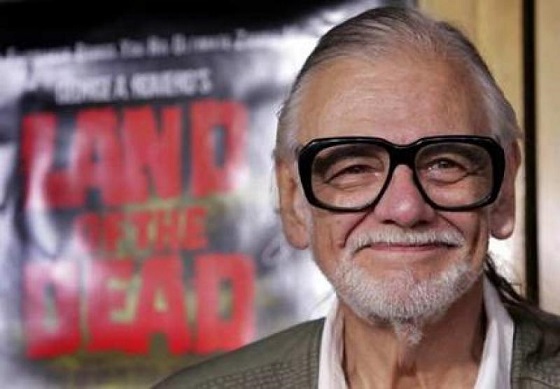
Few filmmakers can be said to be as prolific and influential as George Romero. An icon of the zombie film genre, Romero’s love of horror traces back to his youth, and watching classic monster films such as Frankenstein and Dracula. Romero’s love of these films set him on a path to not only create horror films himself, but to change and redefine the genre for decades to come.
Romero’s first foray into the zombie film genre was 1968’s Night of the Living Dead. While a spectacular film in and of itself, Night of the Living Dead introduced the world to the modern zombie, and standardized the way that zombie films would be told from then on. Set in a farmhouse, the film depicts a small group of survivors fending off hordes of the reanimated dead. Prior to Romero’s take on zombies, Hollywood films depicted zombies as pale-faced minions of voodoo sorcerers. Romero’s zombies were something else entirely. While they remained reanimated corpses like their classic counterparts, Romero’s zombies were no longer faceless emissaries of witchcraft, they could be anyone, even a person’s neighbor or loved one. Romero’s zombies also had only one goal: to feed off the flesh of the living. Furthermore, Romero’s zombies initiated the idea that zombies walked in slow, shuffling movements and could only be killed by destroying their brains, usually by shooting one in the head.
While Night of the Living Dead vastly changed how the world looked at zombies, for Romero, the stars of the film, and indeed the primary antagonists, were always the human characters and how they interact with one another. This point is particularly stressed in that Night of the Living Dead star Duane Jones was more concerned about how the public would feel that he, as an African American, hit a white woman in a moment of extreme drama in the film, rather than the horror or gore that the film recounted.
Romero’s depiction of humans as the primary antagonists of his films continued in his 1978 film Dawn of the Dead. Set several weeks into the zombie apocalypse that began in Night of the Living Dead, Dawn of the Dead is regarded by many critics as the strongest film in Romero’s zombie series. Dawn of the Dead follows a group of people who attempt to survive the zombie onslaught by hiding out in a mall. While still feeling imprisoned by the zombies that roam outside, the survivors quickly come to embrace the relative safety of the mall and even enjoy the amenities that the location provides. In the end, the group’s safety is threatened not by the undead, but by a local biker gang, who break-in and begin looting the mall, allowing the zombies to invade their sanctuary. The film also features subtle undertones of the dangers of consumerism, as many of the characters theorize that the zombies are drawn to the mall by a subconscious need, suggesting that it is in modern man’s nature to seek out material objects.
Romero’s next movie in his Dead series was 1985's Day of the Dead. Like in his previous works, Romero portrays the humans as the primary antagonists of the story, this time in the form of a ruthless military commander in a government research station. Romero's Dead series would continue in 2005's Land of the Dead, 2008's Diary of the Dead, and 2010's Survival of the Dead, all of which continued Romero's trademark style of people fighting for survival in the wake of hordes of the undead. And while Dawn was a bigger box-office draw, with it's biting criticism (if you’ll pardon the awful pun) of consumer culture in the seventies, it hasn’t aged as well as Day. It could be that Day's critique of the military is more resonant today in the wake of the Iraq war, or it could also be because the special effects are more sophisticated. Whatever the reason for its enduring popularity, Day has already spawned one remake, with yet another currently in the works, it was recently re-released on Blu-Ray, and it's being shown regularly on Robert Rodriguez's El Rey cable network, which also means it's streamable from most major providers.
Of the latest three in Romero’s series, Diary of the Dead is regarded most favorably by fans of the series. While retaining elements similar to previous entries in the Dead series, in Diary of the Dead Romero chose to film the movie in the found footage style of modern horror classics, such as The Blair Witch Project and Paranormal Activity.
While Romero is best known for his zombie films, he has also met great critical acclaim in some of his other work. Notably, the 1978 film Martin is a spine-tingling vampire thriller, where viewers are asked to ponder if the film's protagonist is an actual member of the undead or just a mentally disturbed young man. Also of note is Romero's 2000 drama Bruiser, where a man seeks revenge on those who robbed him of his life and identity.
Romero's influence on the horror genre continues to resonate in the work of modern filmmakers. In the 2002 film 28 Days Later, director Danny Boyle included many ideas pioneered by Romero in his own zombie story, particularly the idea of a small group of survivors fighting off legions of the undead. Filmmakers have further taken a comedic approach to Romero's ideas, as in 2009's Zombieland, and even a romantic approach, as seen in Warm Bodies from 2013. Romero's influence on pop culture has even penetrated into television programming, as exemplified by the great success that The Walking Dead achieved upon its premiere in 2010.
